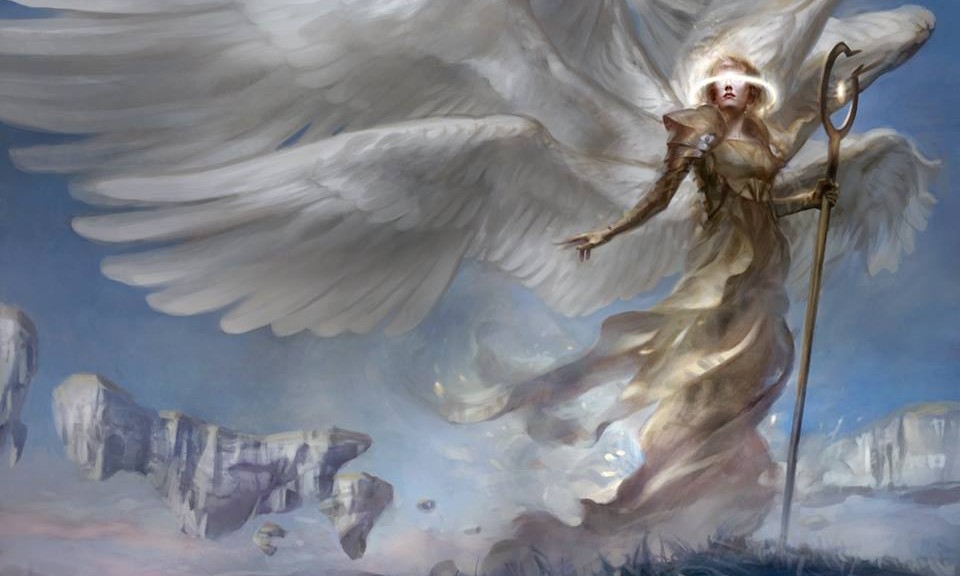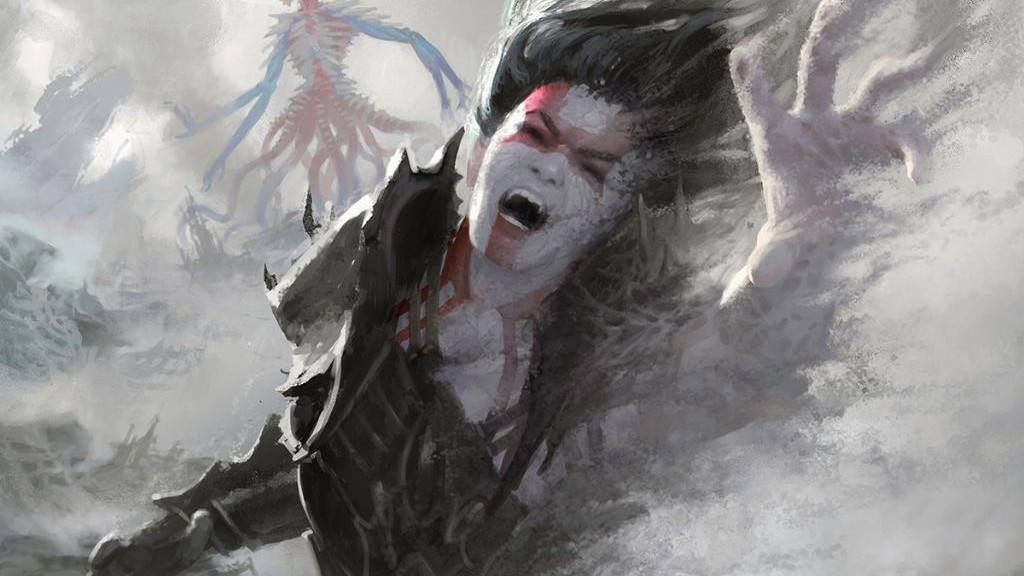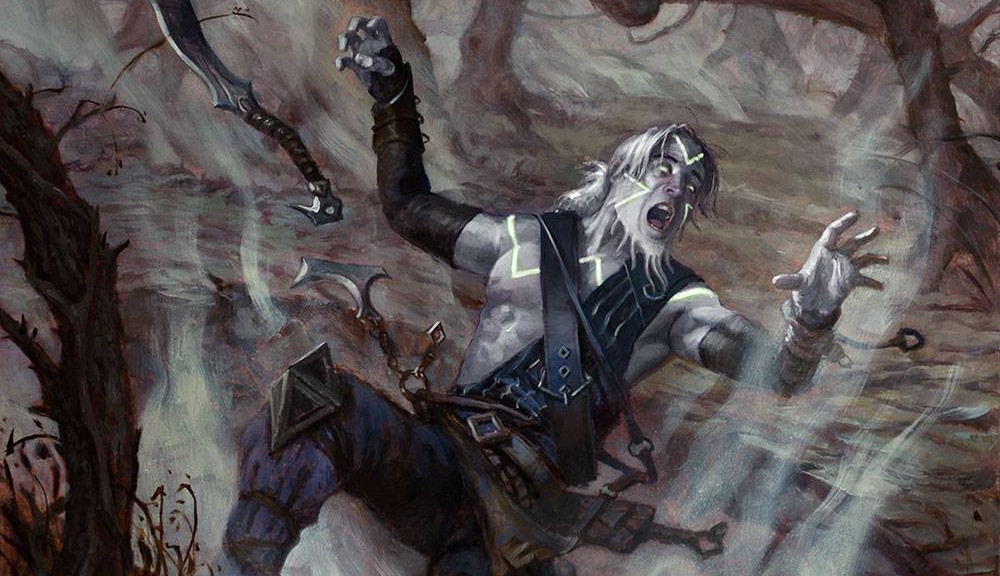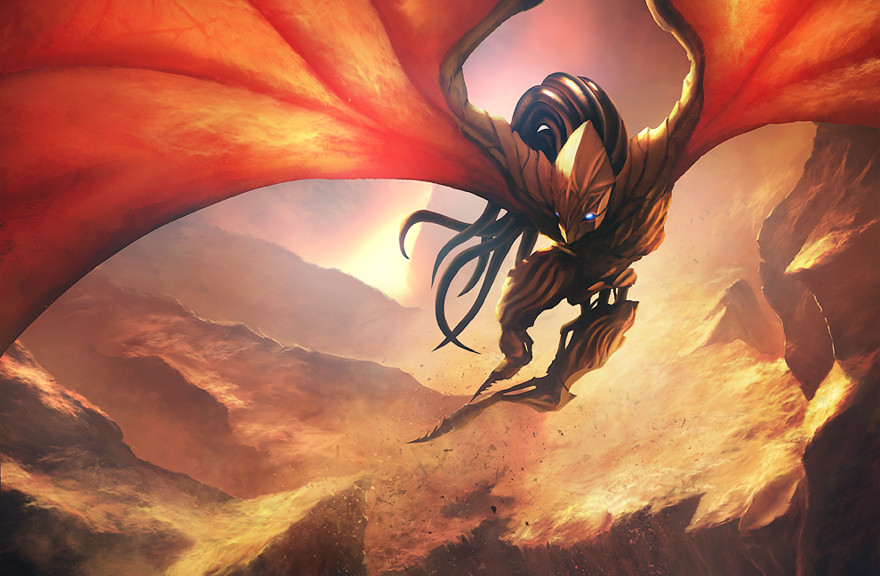By: Travis Allen
This spoiler season has been bittersweet in a way that none other (except maybe Khans of Tarkir) has come close to. Every morning around 10:40 a.m. EST, I’ve started mashing F5 on MythicSpoiler.com and alternating between that and Twitter to catch all the new hotness.
Then immediately begins the excited chatter about the new cards. Is From Beyond better or worse than Awakening Zone? Did anyone use Awakening Zone in the first place? How cool is Bring to Light? What stupid synergies can we spot that seem to be excellent now but will be awful in hindsight?
For those that are inclined to read this type of article, spoiler season also carries for us the additional layer of price considerations. What does Greenwarden of Murasa do to See the Unwritten? Is Herald of Kozilek a real card in Modern, and if so, should I be buying out Chromatic Star? (No.)
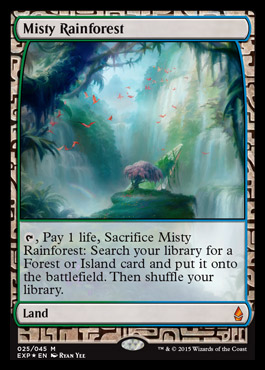
All of the above is the sweet stuff. Expeditions bring the bitterness. Why are they bitter? Well, aside from those frames being ugly as sin, there’s the fallout of their rarity. Expeditions are going to be so rare, so in demand, and subsequently so expensive, that Battle for Zendikar cards are going to be nigh incapable of sustaining any meaningful price tag. So great will this impact be that I have made a rule for myself: no speculating on Battle for Zendikar cards, ever. Just don’t do it.
Yes, some cards will change in value. Some card out there is wildly undervalued and may even pull a Hangarback Walker. Someone will make money on BFZ cards. It just won’t be me. It’s going to be so damned difficult to find the one or two cards that will spike, and the spike will be so much less pronounced, that it’s simply not worth it. We’re better off writing off the entire set as cards with virtually no value and looking for financial upside anywhere else. For a financier, effectively being locked out of seeking monetary gain for the next two sets is a bummer. We don’t get any new toys to play with.
If you don’t quite understand why Expeditions are going to crush card value in BFZ, then there’s a good lesson here for you this week. I’ve written down some variant of “not everyone gets supply and demand” in no less than three places I keep article ideas, so clearly it’s a topic I feel the community would be well served to discuss.
This week I’ll expand on the economic laws of supply and demand and how they apply to Magic. Hopefully by the end of this, you’ll understand a bit better why one card is $10 while another is $1.
Supply
The formal economic laws of supply and demand are not terribly complex, but admittedly beyond the scope of this article. I’m going to shrink their applicability to Magic.
When we talk about supply in 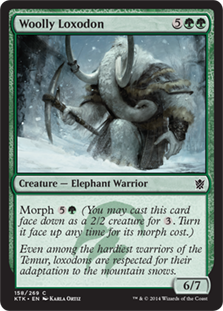 Magic, it’s straightforward and easy to grasp. It’s a question of how much of a given card is available. Even though we’ll never know it, there’s a discrete quantity of any given card. For example, there are hundreds of thousands of copies of Khans of Tarkir draft chaff Woolly Loxodon out there in the world. Zillions of packs of KTK were opened, and as a common, enough Woolly Loxodons are out there to rebuild the half of California’s trees that have burned down recently.
Magic, it’s straightforward and easy to grasp. It’s a question of how much of a given card is available. Even though we’ll never know it, there’s a discrete quantity of any given card. For example, there are hundreds of thousands of copies of Khans of Tarkir draft chaff Woolly Loxodon out there in the world. Zillions of packs of KTK were opened, and as a common, enough Woolly Loxodons are out there to rebuild the half of California’s trees that have burned down recently.
Furthermore, nobody is holding onto their Woolly Loxodons. They aren’t stored in people’s collections because they’re not eternal playable or something people collect. If SCG tomorrow said it would pay 25 cents each on Woolly Loxodons, they would have tens of thousands before the close of business.
On the opposite end of the scale of supply is any of the power nine. The absolute quantity of Black Lotus is extremely low relative to nearly every other Magic card in existence. It’s at the rarest rarity in the sets with the smallest distribution in the game’s history. Off the top of my head, the only cards I can imagine existing in fewer absolute quantities are Shichifukujin Dragon, 1996 World Champion, and probably the summer Magic rares. (Feel free to point out all the other cards I’ve missed that are more rare than Lotus in the comments.)
Not only is there an extremely small amount of Black Lotuses out there in the world, the ones that do exist aren’t necessarily liquid. A great many of them are locked away permanently in people’s personal collections, the owners unwilling to part with them. This further reduces the quantity of available Black Lotuses on the market. At the end of the day, there are only a few hundred or thousand copies readily available on the market at any given time.
While Woolly Loxodon and Black Lotus represent extremes in terms of supply, usually we’re thinking about cards closer to the middle of the spectrum. Consider Thoughtseize and Scapeshift. Both have been printed in modern-border sets, so neither is comically unavailable like Alpha rares are. They’re both rares.
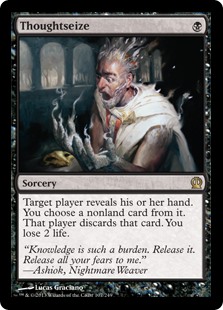

They’re also from two different time periods in Magic. Thoughtseize was originally printed in Lorwyn, and then again two years ago in Theros. As a rare in Theros, there is a considerable amount of available supply on the market. Fewer copies of Pyxis of Pandemonium exist than Thoughtseize.
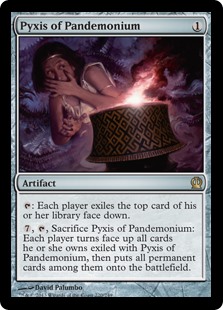
Scapeshift’s only printing was in Morningtide, though. Morningtide was printed shortly after Lorwyn, so it wouldn’t be unfair to say there’s about the same number of Scapeshifts as there are Lorwyn Thoughtseizes. That’s only the Lorwyn printing, though—the Theros printing added a magnitude more copies to the world.
How many fewer copies of Scapeshit are there really? This is extremely difficult to put a number on. Wizards doesn’t release sales numbers like this. We have no idea how many cases of any given set were printed and/or sold. All we can do is make semi-educated guesses. Without doing any digging, I’d guess that Theros probably sold in the ballpark of 5 to 30 times as much product as Morningtide. That’s a tremendous range of course, but you get the idea. The difference in quantity between Thoughtseize and Polluted Delta is measured in a single digit percentage, while the difference between Scapeshift and Thoughtseize could be 1,000 to 3,000 percent.
When considering the supply of any given card, there are two major factors to take into account. What set is it from, and has it been reprinted? Cards in the early Modern and pre-Modern era have dramatically smaller print runs than cards printed today. Cards from Eighth Edition, Ninth Edition, Mirrodin block, and Kamigawa block are far rarer than cards from the block immediately following, Ravnica, which itself is hilariously rarer than Zendikar or Innistrad. The difference in quantity between old blocks and new is a tremendously important factor in why some card prices skyrocket out of control with little demand, while others that are in high demand are worth so little.
Siege Rhino, a Standard staple and Modern role player is currently under $3 on TCGplayer, while Sedge Sliver, a three- or four-of in a single Modern deck that may or may not be any good at all is worth nearly $10. Even though compared to Sedge Sliver, Siege Rhino is played at some ridiculous rate like a 100:1, Rhino is much cheaper. While it may see play at a 100:1 rate, at the same time there could be a 1,000:1 rate in the same direction when we’re talking about supply. 1,000 Siege Rhinos for every Sedge Sliver. If those comparisons are correct (which they aren’t, they’re exaggerated for illustrative purposes,) it would mean that Sedge Sliver is actually ten times more desirable than Siege Rhino!
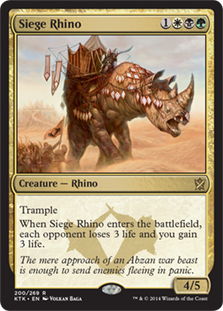
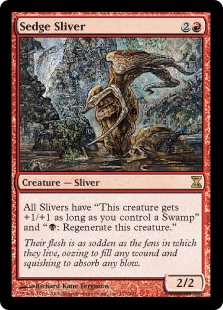
The other major factor goes hand in hand with the first: what types of reprints has the card seen? Tarmogoyf is originally from Future Sight, a set with one of Magic’s lowest supplies in the last decade. For a card as important as Tarmogoyf, that sets up a price tag that would make today’s $190 look like a down payment. Except that Tarmogoyf was also printed in Modern Masters. And Modern Masters 2015. So while it’s from an era of low supply, it’s also been reprinted twice in the last few years, adding dramatically to the available quantity.
An even more recent example exists. Felidar Sovereign is a mythic from Zendikar. Over the last few years, its price has climbed to north of $10. As a mythic from a set six years ago, supply was quite low. With the upcoming reprint in BFZ, though—at rare, nonetheless—the supply is going to increase by probably tenfold. If there’s no change in demand, that means the only variance in the equation would be the amount on the market. Ten times more copies suddenly becoming available means that we’ll see the price drop to perhaps 10 percent of what it is today. By December, I’d be surprised to see Felidar Sovereign over $1.
Demand
Supply in Magic is fairly easy to figure out. Look at what set the card is originally from, then see what reprints exist. If reprints exist, see what era they come from. A card printed in Eighth Edition will be fleetingly rare, and one in both Eighth Edition and Ninth Edition is still going to be scarcer than a card newly printed in Khans of Tarkir.
Demand is much tougher to understand, because it’s not simply a number to be feebly guessed at. While we may not actually be able to know it, there exists some true value for the supply of any given card. Demand, though, is not so quantifiable. How much demand is there for Scapeshift? We answer that qualitatively—“a lot” or “not as much as for Thoughtseize.”
When we talk about demand, in essence, we’re talking about who wants to play with the card. Typically, this is categorized roughly by format: Standard, Modern, Legacy, EDH, etc. Understanding what demographics desire a card is vital to making accurate predictions about price trajectories.
Languish is really only in demand in Standard. Modern players don’t need it, as there are better options. The same goes for Legacy and EDH. Casual kitchen-table players are unlikely to want the effect, either. The demand for Languish comes from two places, then: some Standard players, and players in other formats who A. don’t want to fork over the cash for Damnation, and B. don’t have access to white mana.
Tarmogoyf is in demand not from Standard players, but certainly from anyone playing Modern or Legacy. Despite what the price may indicate, it actually misses EDH and casual demand.
Not all formats are created equally, either. If 70 percent of Standard players want Card X, and 70 percent of Modern players want Card Y, Card X is going to have considerably more demand. The sheer number of people playing Standard means that it tends to create the largest demand of any competitive format. In general, each format’s ability to generate demand decreases in roughly this order: Standard, Modern, Legacy, EDH, Cube, and Vintage. Standard cards generate the most demand, Vintage the least, EDH drives more demand than Cube, etc.

You’ll notice I left off casual demand. Kitchen-table and casual Magic isn’t a format, per se, but that doesn’t make it any less important. Quite a few months ago, I wrote about Consuming Aberration. Consuming Aberration sees absolutely zero play in any format except for possibly some mild EDH play, and yet as a rare from what was a recent set at the time, meaning it had tremendous supply, it was still (and is still) $3. That a card with so much supply and so little competitive demand could cost $3 tells us that casual and kitchen-table Magic can generate some intense demand that is otherwise invisible to more enfranchised players such as we tend to be.
Demand isn’t limited to simply counting how many formats are interested in a card, either. Here’s some quick hits that contribute to demand for a card.
Collectors
Cards that are unique or remarkable in some fashion outside typical gameplay generate additional demand. Nobody plays Richard Garfield, Ph.D. or Little Girl, but foils are still an exorbitant amount because people collect them for various reasons. Mint Alpha and Beta cards carry additional demand relative to played copies because people want to collect pristine sets of Magic’s initial run.
Rarity
Absolutely nobody wants Shichifukujin Dragon in order to add it to their dragon deck. People want it because it’s the only one in existence. Summer Magic cards are in the same boat. The fewer of something there is, the more people care. If Shichifukujin Dragon was a rare in BFZ, nobody would want copies. Make it the only one in the world, though, and suddenly there’s a lot of potential buyers. This is essentially what the entire miscut market is predicated on.
Aesthetics
Lorwyn Thoughtseize is twice the price of the Theros one, and not just because there are fewer copies. Many players strongly prefer the original faerie art, in which a faerie steals thoughts out of someone’s ear, rather than the Theros art, in which a guy is turning to dust because, well, *phbt.* Better looking editions of cards will cost more than their ugly counterparts. Aesthetics, along with rarity, are why foils cost so much more than non-foils.
Quantity
Decks rarely need more than one Iona, Shield of Emeria. It’s just not a card you tend to play four copies of. Siege Rhino, on the other hand, rarely shows up with anything less than a full herd. If you’re going through all the trouble to pay three colors across four mana for Siege Rhino, you probably want as many as you can get. Cards that players only need a single copy of are simply going to generate less demand than cards players buy in playsets.
Replaceability
How vital is the card to the deck it’s played in? A Twilight Mire can instead be a Woodland Cemetery or another Overgrown Tomb in a pinch. There’s only one Cavern of Souls, though.
All these different factors work in concert when determining the total demand for a card. When reading my discussion of cards as speculation targets, you’ll notice I sometimes use the term “demand profile.” What I’m talking about is the sum total of all demand for that card.
Wingmate Roc, which is only played in Standard, has a small demand profile relative to Polluted Delta, which is used by everyone that plays Magic, though Wingmate’s profile is still large compared to Pearl Lake Ancient. The larger the demand profile, the more sources have an interest in the card. If only a tiny fraction of Magic players are in the market for a specific card, it has a small demand profile. On the flip side of that, if players from across the spectrum want copies, that’s a huge demand profile. The larger the demand profile, the more expensive the card.
Intersection
Supply is how many of a given card exist in the world to be bought and traded. Demand represents how many people want a given card, and how many copies of it they need. The intersection of these two factors is how much a card ends up being worth.
Looking back at Thoughtseize and Scapeshift will help us understand how this works. Scapeshift and (Theros) Thoughtseize are nearly the same price. Yet they vary wildly on the supply and demand scales. What’s going on?
On the one hand, Scapeshift is a rare from Morningtide, making it one of the rarest Modern cards that sees play. It’s the lynchpin of a tier-1.5 combo deck in a competitive format. Scapeshift is irreplaceable in the list, and is invariably played as a four-of. All of that works towards increasing its price. On the other hand, the demand profile is actually fairly low. Yes, it’s important in that one deck, but that’s the only place it’s important. Nobody uses it in any other DCI-sanctioned format. It’s not a popular EDH card. Casual players enjoy it in some capacity, but not overwhelmingly so. All of that works against its price. Basically, Scapeshift is extremely important in one narrow application. Given its low supply and moderate demand, we end up with a price around $20.
Under the hood, Thoughtseize looks quite different. Unlike Scapeshift, the supply on Thoughtseize is quite high. As a rare in Theros and in Lorwyn, there are more copies of Thoughtseize than nearly any other Standard-legal rare. Also unlike Scapeshift, demand for Thoughtseize is widespread. Everyone playing Standard, Modern, Legacy, or Vintage needs to have a set available to them. Anyone with a cube has a copy, as well. While the supply of Thoughtseize is considerably greater than of Scapseshift, so too is the total demand. It seems that the supply and demand end up at about the same ratio as Scapeshift, as it to lands right around $20.
The lesson to be learned from examining Scapeshift and Thoughtseize is that supply and demand each play an important role in establishing prices, and they play off each other considerably. A card with moderate demand and low supply can end up with the same price tag as a card with tremendous demand if it also has an abnormally high supply.
Application
Our goal when speculating on cards is to identify those cards which will make us the most money. Those, of course, are cards with the lowest supply and the greatest (potential) demand. What’s that mean?
First of all, it means anything from pre-Zendikar days is going to be worth a lot of cash with only the slightest hint of demand. Supply is so low from those early sets that barely any demand will easily force prices into double digits. That’s why I can get away with speculating on cards like Retract or Restore Balance. Neither of those cards has any demand profile at all right now. Nobody cares about them. But if even a single person does well with a deck that uses one of those cards, the demand could easily increase one thousand times over, and that’s going to mean big profits.
With specs like Retract and Restore Balance, I’m not expecting them to become wildly popular. I’m banking on the supply being so low that any demand whatsoever will make me money. We saw this most recently with Sedge Sliver. People aren’t falling over themselves to play slivers in Modern, but with supply as low as it is, it only takes a few interested people for copies to dry up quickly.
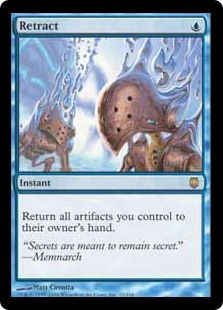

Alternatively, finding cards with massive, widespread demand can be lucrative as well. Buying fetch lands in the spring was a wise decision because you knew that basically anyone playing Magic needed copies. Even though supply on Deltas and Flooded Strands was immense, so too was the amount of people looking to buy playsets. You couldn’t have expected a sudden spike in prices, but what you could expect was consistent, reliable growth. Supply was great, but so too was demand.
Where you get into trouble is with cards that have tremendous supply, but not enough demand to overcome the glut of copies. A card I’m eager to play with, Bring to Light, is a good example of this. Bring to Light both tutors for a spell and casts it for free, two things that historically have had no trouble being broken. It could possibly end up as a role player in both Standard and Modern. Yet, this card is not going to be expensive anytime soon. The supply will simply be too great. As a rare in Battle for Zendikar, there will be millions of copies of BTL opened as players search for Expeditions lands. Even if BTL shows up in a big way in two competitive formats, there simply will be too many copies to make it a meaningful speculation target.
Instead, players should consider what BTL will be searching for. If a BTL deck shows up in Modern, what spells is it trying to cast? This is how I ended up on Restore Balance and Wheel of Fate, by the way. BTL will be too commonplace to meaningfully grow in price, but if it’s searching for Time Spiral rares that have never been reprinted, those could certainly gain value in a hurry.
As cards are spoiled and new, profitable interactions appear. Remember that a deck is more than one card. When Vampire Hexmage was spoiled way back in Zendikar, Dark Depths was maybe $1. If you had noticed this synergy, speculating on Hexmage would have been idiotic. Why buy into a a brand-new uncommon? Instead, had you bought into Dark Depths, a rare that was several years old, you would have made a disgusting amount of money per copy (this example is painful for me to highlight. I remember reading Hexmage the morning it was spoiled and immediately thinking about Dark Depths. Unfortunately, I wasn’t attuned to the market the way I am today, and didn’t bother to buy any copies. Aghhhhhhhhhhh).
Another perfect example of this lesson showed up in my Twitter timeline today. I saw someone claiming that buying foil Mortuary Mires at $1 was a great spec. Mortuary Mire is a common from Battle for Zendikar. Let’s apply what we just learned about supply and demand.
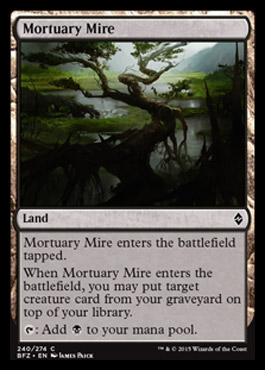
Foil Mortuary Mire’s supply is going to be the largest of any foil in BFZ, equal to every other common in the set. As far as foils go, Mire is as available as they come. We already talked at the beginning of the article about how Expeditions lands are going to result in an abnormally large supply of BFZ cards, even more so than most fall sets, which are already the most available of any sets.
How about demand? It was highlighted in the context of EDH. That would mean that the bulk of demand will come from players that only need a single copy, rather than a playset. It may pop up in Modern or Legacy, but again, as a non-basic land that only taps for a single color of mana and enters the battlefield tapped, there are extremely few lists that will want more than a single copy.
If we look at Bojuka Bog, another common, utility, black-producing land from the original Zendikar, we can perhaps get some perspective on Mire. Foil Bojuka Bog is about $6 right now. If your spec climbed from $1 to $6, you’d be pretty happy. That would be worth buying into—if it weren’t for the fact that Bog is now six years old. How long will you have to sit on those Mortuary Mires before they’re $6? Will they ever be? With supply as large as it will be, and demand so low, the opportunity cost of tying up money hoping to make $4 a copy five years later is simply way too high. Instead of buying ten $1 Mires, just buy three or four Siege Rhinos and double your investment in two months.
When evaluating a speculation target, make sure you take time to fully consider what set(s) it has been printed in, and how many people will actually want copies. Is it a three-color role player in a single Standard deck? Or is it a mythic, mono-color spell with applicability in Standard, Modern, and Legacy?
By appreciating how supply and demand interact in the Magic market, you can begin to understand why some cards have such exorbitant prices, and also why it’s a terrible idea to speculate on certain cards. The key to success is making an accurate evaluation of demand relative to supply, which is no mean feat.
